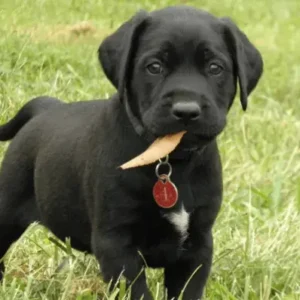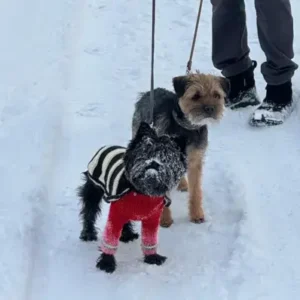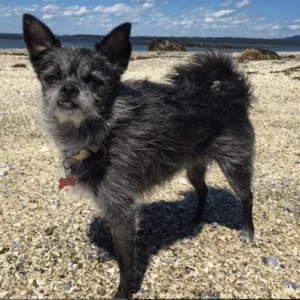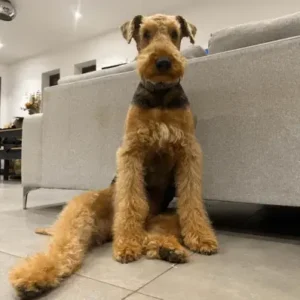Cavador History/Origin
The Cavador is a relatively new hybrid dog breed, believed to have emerged in the 1990s. Its popularity has surged due to its parent breed, the Labrador Retriever, consistently ranking as the most popular dog in the United States.
Labrador Retrievers, originally called St. John’s Dogs, hail from Canada, where they were prized as sporting dogs for hunting and fishing. In contrast, the Cavalier King Charles Spaniel, dating back to the 1600s, was often favored by royalty.
Although the Cavador is recognized as a designer breed, many unfortunately end up in shelters. If you’re considering welcoming a Cavador into your home, consider reaching out to local rescue groups and shelters.
Cavador Personality
Cavadors are one of the dog breeds that is incredibly loving and social, making them a perfect addition to any family. They thrive on companionship, enjoy being around children, and love joining in on family activities, whether it’s running errands or going on trips. Their friendly nature ensures they’ll always seek out interaction and affection.
- Potential Challenges
Cavadors, while loving and social, come with some potential challenges. Their high energy levels mean they require regular, vigorous exercise to stay healthy and happy, making them a demanding companion for less active families.
Their intelligence also necessitates consistent mental stimulation. This can be challenging for owners who don’t have the time or resources. Providing interactive toys and regular training sessions is essential. Without proper physical and mental engagement, Cavadors may become bored, leading to destructive behaviors.
Cavador Physical Appearance
Cavadors are considered a medium-sized breed. Cavadors usually feature brown, almond-shaped eyes and floppy ears, which may have a bit of feathering. They often inherit characteristics from their parent breeds.
- Size
The Cavador is generally considered a medium-sized dog, though size standards can vary with newer breeds. Most Cavadors weigh between 22 and 55 pounds and stand 18 to 24 inches tall.
- Coat color
Cavadors are known for their various coat colors, with popular shades including yellow, brown, black, red, and golden. Their coats are typically short to medium in length, water-resistant, smooth, and dense.
Golden Cavador- Source: bailey.cavador
Black Cavador- Source: bailey.cavador
Brown Cavador- Source: milo.the.cavador
Cavador Gender Differences
Gender differences in Cavador are generally subtle. Males might be a bit more playful and outgoing, while females may show more independence and a stronger desire to please. However, individual personalities vary widely, and factors like upbringing and training often have a greater impact than gender.
Cavador Feed/Nutrition
A Cavador’s ideal diet should be designed for a medium-sized, high-energy breed, with about 3 cups of food per day. To prevent weight gain, it’s crucial to maintain a healthy diet and provide sufficient exercise, as overeating can lead to obesity.
Dietary needs will evolve from puppyhood to adulthood and continue to change into their senior years. For tailored advice, consult your veterinarian, as each Cavador’s dietary requirements vary based on factors like weight, energy level, and overall health. Cucumbers and carrots can be a healthy, low-calorie treat for your Cavador in moderation, providing hydration and fiber.
Cavador Health
Cavadors are generally healthy, but they may be prone to certain conditions inherited from their parent breeds, the Cavalier King Charles Spaniel and Labrador Retriever. Regular vet visits are crucial for early detection and management of health issues. Here are some common health problems and their preventive measures:
- Canine Gastric Torsion: Bloat is a severe condition where the stomach fills with gas and twists, leading to extreme pain and potentially fatal complications. Preventive measures include feeding smaller, more frequent meals, avoiding vigorous exercise immediately after eating, and providing elevated feeding bowls to reduce the risk. Immediate veterinary care is essential if symptoms occur.
- Hip Dysplasia: This genetic disorder involves the abnormal formation of the hip joint, leading to arthritis and pain. To help prevent hip dysplasia, choose a reputable breeder who tests breeding dogs for hip health and maintains a healthy weight through proper diet and exercise. Regular vet check-ups can help monitor joint health.
- Progressive Retinal Atrophy: PRA is a progressive eye disease that leads to blindness as the retina deteriorates over time. There is no cure, but breeding dogs should be tested for PRA to reduce the risk of passing it on. Regular eye exams can help monitor any vision changes.
- Mitral Valve Disease: This heart condition affects the mitral valve, causing it to malfunction and potentially leading to heart failure. Preventive measures include regular veterinary check-ups to monitor heart health, maintaining a healthy weight, and managing symptoms with prescribed medications if necessary. Early detection can improve the quality of life for affected dogs.
Cavador Care and Grooming
Cavadors need plenty of exercise to stay happy. Aim for two half-hour walks daily, along with playtime and running sessions. An enclosed yard is ideal for outdoor play but always supervised.
Regular grooming is essential: brush their teeth daily, keep up with nail clippings, and clean their ears with a wet cotton ball. A couple of brushing sessions per week will help manage moderate shedding. If your Cavador enjoys swimming and playing in the mud, regular baths with a vet-recommended shampoo are necessary.
Cavadors adapt well to moderate temperatures but can handle both hot and cold climates. Provide a dog coat in winter and ensure fresh water and shade in summer.
House training your dog is an important step in establishing good habits. Consistency, patience, and positive reinforcement will help your Cavador learn quickly.
Cavador Rescue Groups
Cavadors, as a designer breed, often end up in rescue groups associated with their parent breeds, the Cavalier King Charles Spaniel and Labrador Retriever. If you’re considering adopting a Cavador, checking with rescue organizations dedicated to these breeds can be a great way to find a loving companion in need of a home.
Cavador Price
The price of a Cavador typically ranges from $4,500 to $5,500, depending on factors such as breeder reputation, pedigree, and location.
Cavadors, as a designer breed, are available for purchase through reputable breeders. You can also find them through rescue groups, offering a chance to adopt a Cavador in need of a loving home. Whether buying or adopting, ensure you choose a source that prioritizes health and well-being.
Interesting Facts
- Cavadors are known for their friendly and social personalities, making them excellent companions not only for families but also for individuals looking for loyal and loving pets.
- They are highly trainable and enjoy learning new tricks and commands, often responding well to positive reinforcement and treats.
Best For
Cavadors are great for families with children due to their friendly and playful nature. They suit active individuals or families who enjoy outdoor activities, as they need regular exercise. Their easygoing temperament makes them ideal for first-time dog owners. They also make wonderful companions for those seeking affection and loyalty. They adapt well to both houses and apartments, provided they get enough exercise.
Top Names
| Male Cavador Names | Female Cavador Names |
| Max | Bella |
| Charlie | Luna |
| Cooper | Daisy |
| Rocky | Lucy |
| Duke | Molly |

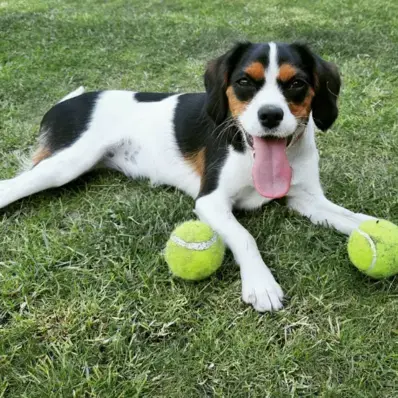







 Cavalier King Charles Spaniel- Source:
Cavalier King Charles Spaniel- Source:  Labrador Retriever- Source:
Labrador Retriever- Source: 

 Golden Cavador- Source:
Golden Cavador- Source:  Black Cavador- Source:
Black Cavador- Source:  Brown Cavador- Source:
Brown Cavador- Source: 


